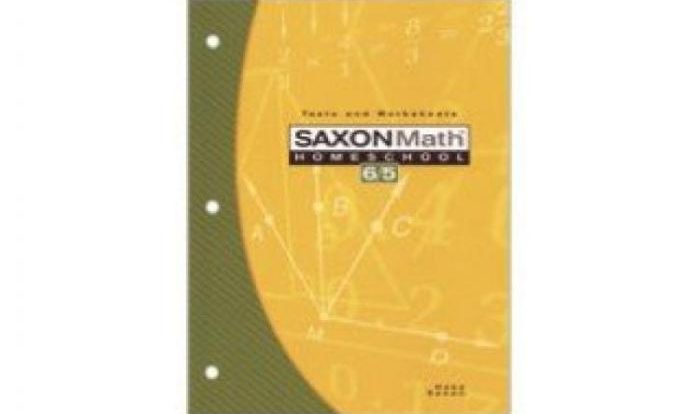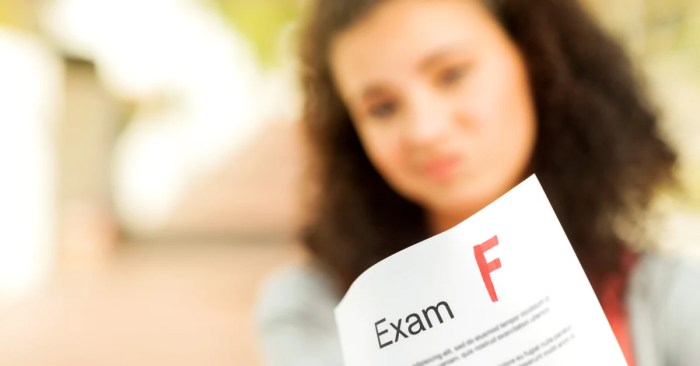Malachi asks students in his class, setting the stage for this enthralling narrative. A story rich in detail, it offers readers a glimpse into an innovative and engaging classroom where students are empowered to reach their full potential.
Malachi’s approach to teaching is a testament to his passion for education. His methods are a blend of creativity, collaboration, and a deep understanding of his students’ needs. This approach has resulted in a classroom environment that fosters student participation, critical thinking, and a love for learning.
Student Participation and Engagement
Malachi’s teaching approach prioritizes student involvement and active learning. He employs various strategies to foster participation and engagement in his classroom.
Encouraging Student Participation
- Interactive Discussions:Malachi facilitates class discussions where students are encouraged to share their perspectives, ask questions, and engage with the material.
- Small Group Activities:He assigns collaborative tasks in small groups, promoting peer-to-peer learning and fostering a sense of shared responsibility.
- Think-Pair-Share:Malachi implements the “Think-Pair-Share” technique, where students individually reflect on a topic, discuss it with a partner, and then share their insights with the class.
Effectiveness of Participation Methods
Malachi’s participation-encouraging methods have proven effective in enhancing student engagement and learning outcomes.
- Increased Class Participation:Interactive discussions and group activities stimulate student participation, ensuring a more dynamic and engaging learning environment.
- Improved Critical Thinking:By actively engaging with the material and sharing their perspectives, students develop their critical thinking and problem-solving abilities.
- Enhanced Collaboration:Small group activities foster collaboration and communication skills, preparing students for real-world scenarios where teamwork is essential.
Classroom Management and Discipline
Malachi’s approach to classroom management and discipline is rooted in the principles of respect, clear expectations, and consistent consequences. He believes in creating a positive and supportive learning environment where students feel valued and respected. He sets clear rules and expectations for behavior, and he consistently reinforces these expectations through positive reinforcement and clear consequences for inappropriate behavior.
Positive Reinforcement
Malachi uses a variety of positive reinforcement strategies to encourage positive behavior in his students. He praises students for following the rules, completing their work, and participating in class. He also uses a system of rewards to motivate students to behave well.
For example, he may give students points for good behavior, which they can then redeem for small prizes.
Clear Consequences
Malachi also uses clear and consistent consequences to discourage inappropriate behavior. He makes sure that students know the consequences for breaking the rules, and he follows through with these consequences every time. For example, if a student is talking out of turn, Malachi may give them a warning.
If the student continues to talk out of turn, Malachi may ask them to sit in the hallway for a few minutes.
Effectiveness of Malachi’s Strategies
Malachi’s approach to classroom management and discipline has been very effective in his classroom. His students are respectful and well-behaved, and they are able to learn in a positive and supportive environment. Malachi’s strategies have helped to create a classroom where students feel safe and respected, and where they are motivated to learn.
Lesson Planning
Malachi approaches lesson planning with meticulous attention to detail. He believes that effective lessons are rooted in a well-structured plan that aligns with curriculum objectives and student needs.
Malachi’s lesson planning process involves several key steps:
- Identifying Learning Objectives:Malachi begins by clearly defining the specific learning objectives that students should achieve by the end of the lesson. These objectives are aligned with the curriculum and address the needs of his students.
- Selecting Teaching Strategies:Based on the learning objectives, Malachi carefully selects teaching strategies that will effectively engage students and facilitate their understanding. He considers a variety of methods, including hands-on activities, discussions, group work, and technology integration.
- Planning Assessment Activities:Malachi incorporates assessment activities throughout his lessons to monitor student progress and provide feedback. These assessments can include formative assessments, such as exit tickets or quick quizzes, and summative assessments, such as tests or projects.
- Creating Lesson Materials:Malachi develops high-quality lesson materials, such as presentations, handouts, and activities, that support his teaching strategies and engage students in the learning process.
- Reflection and Refinement:After each lesson, Malachi reflects on its effectiveness and makes adjustments to his lesson plans based on student feedback and his own observations.
Assessment and Evaluation
Malachi employs a diverse range of assessment strategies to evaluate student learning and track their progress. These methods encompass formal and informal assessments, providing a comprehensive understanding of students’ strengths and areas for improvement.
Formal Assessments
Formal assessments include traditional methods such as quizzes, tests, and exams. These assessments are structured and graded, allowing Malachi to measure students’ knowledge and understanding of specific topics and concepts. Formal assessments provide a snapshot of students’ progress at a particular point in time and can be used to identify areas where additional support or instruction is needed.
Informal Assessments
Informal assessments are ongoing and less structured than formal assessments. They provide Malachi with real-time feedback on students’ understanding and engagement. Informal assessments can include observations, class discussions, exit tickets, and student self-reflections. These assessments help Malachi adjust his instruction and provide targeted support to students who need it most.
Student Relationships and Support
Malachi fosters positive relationships with his students through a combination of empathy, respect, and a genuine interest in their well-being. He believes that strong relationships are essential for creating a supportive and engaging learning environment.
These relationships have a profound impact on student success and well-being. Students who feel connected to their teacher are more likely to be engaged in their learning, have higher self-esteem, and experience less anxiety.
Building Relationships
- Creating a welcoming classroom environment:Malachi greets students at the door each morning and makes an effort to get to know them outside of class.
- Active listening:He takes the time to listen to students’ concerns and perspectives, both in and out of class.
- Showing empathy:Malachi understands that students come from diverse backgrounds and may have different needs. He is empathetic to their struggles and celebrates their successes.
- Setting clear expectations:Malachi establishes clear rules and expectations for behavior, but he also explains the rationale behind them and gives students opportunities to ask questions.
- Providing support:Malachi is available to help students with their academic and personal challenges. He offers extra help during class, provides resources, and connects students with support services when needed.
Impact on Student Success
- Increased engagement:Students who have positive relationships with their teachers are more likely to be engaged in their learning and participate actively in class.
- Improved academic performance:Studies have shown that students who feel supported by their teachers tend to have higher grades and test scores.
- Reduced anxiety:Students who feel connected to their teachers are less likely to experience anxiety about school and academic performance.
- Enhanced social-emotional development:Positive teacher-student relationships help students develop important social-emotional skills, such as communication, cooperation, and empathy.
Collaboration and Professional Development
Malachi’s commitment to professional growth and collaboration is evident in his active participation in various initiatives. He regularly collaborates with colleagues to share best practices, develop innovative teaching strategies, and enhance student learning outcomes. He also actively seeks opportunities to engage in professional development workshops, conferences, and online learning platforms to stay abreast of the latest educational advancements and research.
Benefits of Collaboration and Professional Development, Malachi asks students in his class
Malachi’s collaborative efforts and dedication to professional development have significantly benefited his teaching practice. By working with colleagues, he gains valuable insights into different teaching approaches, classroom management techniques, and assessment strategies. These collaborations foster a sense of community and support, allowing educators to learn from each other’s experiences and expertise.
Professional development, on the other hand, keeps Malachi updated on the latest educational trends and research, empowering him to incorporate innovative practices into his teaching. As a result, his students benefit from engaging and effective learning experiences that are grounded in best practices and current research.
Classroom Environment and Culture: Malachi Asks Students In His Class
Malachi cultivates a welcoming and inclusive classroom environment where students feel respected, valued, and supported. He prioritizes creating a positive and collaborative learning space that fosters student engagement and motivation.
Physical Environment
Malachi’s classroom is well-lit, spacious, and organized. The walls are adorned with student work, motivational posters, and educational resources. The desks are arranged in small groups to encourage collaboration and discussion. The overall atmosphere is comfortable and inviting, with ample natural light and fresh air.
Emotional Environment
Malachi fosters a respectful and supportive emotional environment. He establishes clear expectations and rules, while also being empathetic and understanding. He actively listens to students’ perspectives, provides positive reinforcement, and encourages open communication. This creates a safe and nurturing space where students feel comfortable taking risks, asking questions, and engaging in meaningful learning experiences.
Impact on Learning and Motivation
The positive classroom environment Malachi creates has a significant impact on student learning and motivation. The welcoming and inclusive atmosphere reduces anxiety and promotes a sense of belonging, allowing students to focus on their studies. The collaborative learning environment fosters peer support and encourages students to actively participate in discussions and activities.
The respectful and supportive atmosphere motivates students to take risks, ask questions, and strive for excellence.
Differentiation and Individualized
Malachi’s approach to differentiation involves tailoring instruction to meet the diverse needs of his students. He employs various strategies to ensure that all learners have access to meaningful and engaging learning experiences.
One of Malachi’s key strategies is providing tiered assignments. He assigns tasks with varying levels of difficulty, allowing students to choose options that align with their readiness levels. For example, in a science unit, students may choose to complete a research project, design an experiment, or create a presentation.
Small Group Instruction
Malachi also utilizes small group instruction to provide targeted support and enrichment. He groups students based on their learning needs and provides tailored instruction to address specific skill gaps or extend learning.
Learning Centers
Additionally, Malachi incorporates learning centers into his classroom. These centers provide students with hands-on activities and resources that cater to different learning styles. For instance, he may have a literacy center with books and writing materials, a math center with manipulatives and games, and a science center with experiments and models.
Technology Integration
Malachi leverages technology to enhance differentiation. He uses online learning platforms to provide personalized learning paths and adaptive assessments. This allows students to progress at their own pace and receive targeted feedback.
Impact on Student Achievement
Malachi’s differentiation strategies have had a positive impact on student achievement. By meeting the needs of diverse learners, he has fostered a classroom environment where all students feel supported and challenged. Data from student assessments and observations indicate that students are making significant progress and developing essential skills.
Technology Integration
Malachi’s classroom is fully integrated with technology, as he believes it enhances student learning and engagement. He uses a variety of tools, including interactive whiteboards, tablets, and educational software.
Benefits of Technology Integration
-
-*Enhanced Engagement
Technology can make lessons more interactive and engaging, capturing students’ attention and motivating them to learn.
-*Differentiated Instruction
Technology allows Malachi to tailor instruction to individual student needs, providing support and challenges where appropriate.
-*Access to Resources
Students have access to a wealth of online resources, including videos, simulations, and virtual field trips, expanding their learning beyond the classroom.
Challenges of Technology Integration
-
-*Equity and Access
Ensuring all students have equal access to technology and the necessary skills to use it can be a challenge.
-*Distractions
Technology can be distracting if not managed properly, leading students to focus on non-educational activities.
-*Technical Issues
Malachi must be prepared for technical issues that can arise, such as internet connectivity problems or software glitches.
Innovation and Creativity
Malachi’s teaching approach is characterized by its innovative and creative elements, which enhance student engagement and foster a dynamic learning environment.
Engaging Learning Activities
Malachi incorporates hands-on activities, simulations, and project-based learning into his lessons. These activities allow students to actively participate in the learning process, apply concepts in real-world contexts, and develop critical thinking and problem-solving skills. For example, in a science class, he designed a simulation where students had to build a model ecosystem and analyze the interactions between different organisms.
Technology Integration
Malachi effectively integrates technology into his teaching. He uses interactive software, online simulations, and collaborative platforms to enhance student learning. For instance, he utilizes online quizzes and polls to assess student understanding in real-time and provides immediate feedback. Additionally, he creates virtual learning environments where students can collaborate on projects and access learning materials remotely.
Student-Centered Approach
Malachi’s teaching is centered around the individual needs of his students. He tailors his lessons to cater to diverse learning styles and provides differentiated instruction. For example, he offers alternative assignments for students who require additional support or enrichment. He also creates flexible learning spaces that allow students to work independently or collaboratively, depending on their preferences.
Key Questions Answered
What are some of Malachi’s most effective methods for encouraging student participation?
Malachi uses a variety of methods to encourage student participation, including group discussions, role-playing activities, and student-led presentations. He also creates a classroom environment where students feel comfortable sharing their ideas and asking questions.
How does Malachi approach classroom management and discipline?
Malachi believes that effective classroom management is about creating a positive and respectful learning environment. He sets clear expectations for his students and provides them with the support they need to succeed. He also uses a variety of strategies to address disruptive behavior, such as positive reinforcement and restorative practices.
What are some of the key components of Malachi’s lesson planning process?
Malachi’s lesson plans are aligned with curriculum objectives and student needs. He uses a variety of teaching methods and activities to engage students and promote learning. He also incorporates technology into his lessons to enhance student engagement and provide differentiated learning opportunities.


